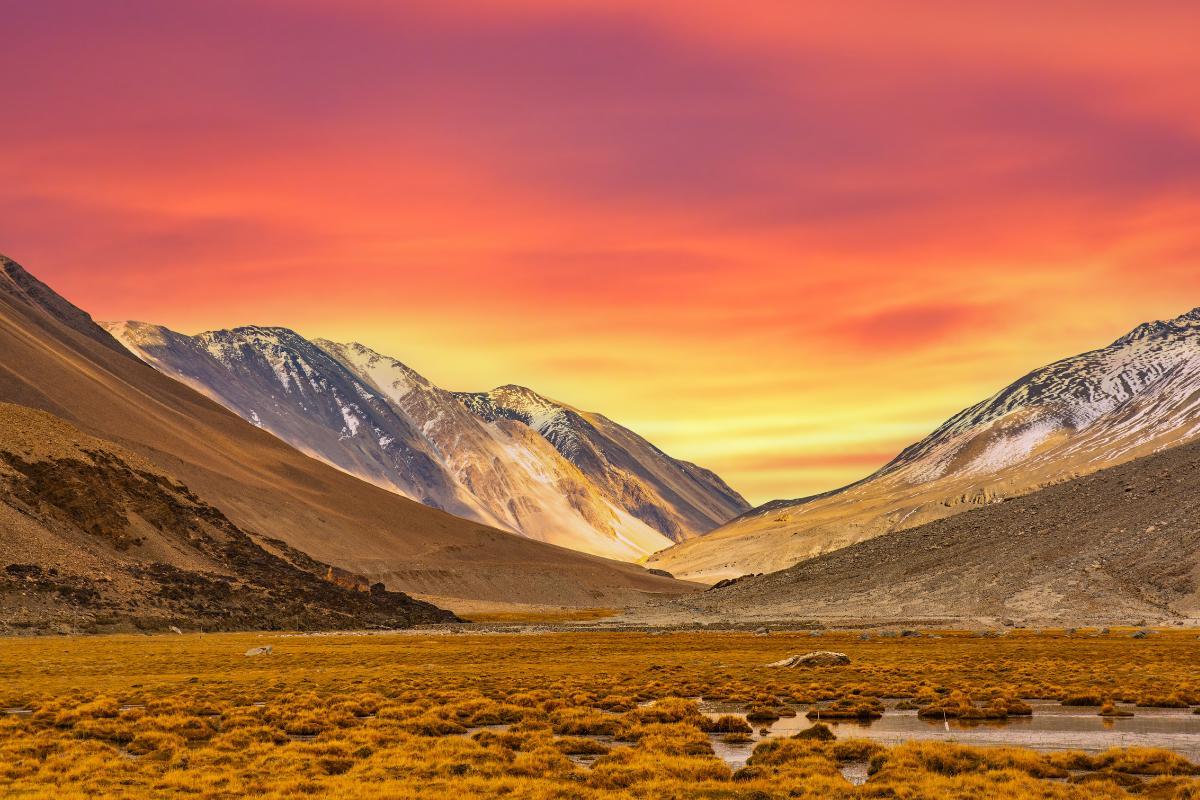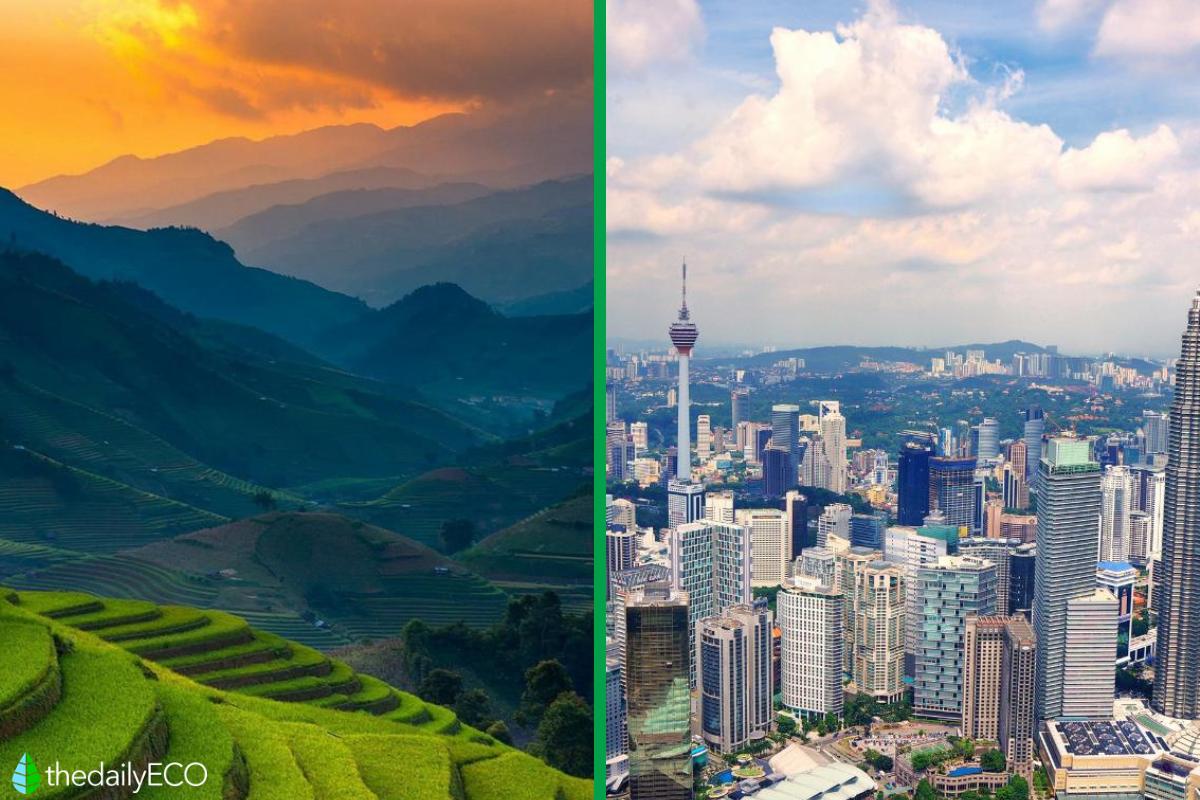Geographical Space Concept - Definition and Types


Geographical space is a term used in the field of geography to describe the particular way in which a society is organized within a physical space. This means that it is a concept which is important to both human and physical geography. We can understand this concept best by looking at how societies interact with their environments, something which can be classified into different types of ‘landscapes’. These include natural, artificial, agricultural, industrial, urban and other types of landscapes.
At thedailyECO, we discover more about concept of geographical space by providing a definition. We also look at types of geographical space and its components.
What is geographical space?
The basic definition of geographical space is that it is the complex and constant interaction between the physical and human characteristics of a certain area of the Earth. It is a fundamental concept in different types of geography. This notion goes beyond a simple geographical location in terms of coordinates. It encompasses a wide range of elements that influence the configuration and dynamics of a region.
Geographical space is made up of physical aspects. This includes the topography of the terrain, climate, hydrography, geology and vegetation among other natural factors. These physical characteristics are essential to understanding the environment of a particular geographical area and how it influences the human activities that take place there. For example, climate can determine the types of crops that can be grown, topography influences accessibility and hydrography influences the availability of water resources.
In addition to physical components, geographical space is also defined by human aspects. This encompasses population, economic activities, culture, politics and technology. The interaction between people and their environment is an essential part of geographical study. For example, population density and the distribution of human settlements can vary considerably from one region to another. In turn, this affects the organization of society and economic dynamics.
Geographic space is not static. It is constantly changing due to a variety of factors. Globalization, migration , climate change and technological advances are just a few examples of forces that can significantly alter geographic space over time.
If you want to learn more about how natural spaces are understood, you can read our related article on what is an ecoregion?

Types of geographical space
Geographical space is diverse and can be broken down into different types or categories for a more detailed and specific understanding. These types of geographical spaces can vary according to several criteria, such as function, scale or predominant characteristics. The following are the best-known types of geographical space:
- Rural space: this type of geographical space is characterized by its low population density and the predominance of agricultural, livestock and forestry activities. Rural landscapes are typically dominated by fields, grasslands, and natural areas.
- Urban space: in contrast to rural space, urban space is characterized by a high population density and the predominance of non-agricultural activities. These include industry, commerce and services. Cities and metropolitan areas are examples of urban space. Discover sustainability in urban spaces with our article on what is a green city?
- Industrial space: this type of geographical space is closely related to the economic activities of production and manufacturing. It includes industrial zones, business parks and areas where the production of goods and services is concentrated.
- Natural space: natural spaces are characterized by the absence of significant human development. This includes national parks, nature reserves, wilderness areas and natural habitats.
- Cultural space: this type of geographical space is linked to cultural practices and human manifestations. They may include historical sites, religious sites, museums, monuments and areas where the cultural identities of local communities are expressed.
- Political space: political space refers to geographical divisions that have political relevance, such as national, regional or municipal borders.
- Maritime space: this type of geographical space is related to the oceans and seas. It includes exclusive economic zones, shipping routes, ports and protected maritime areas. Maritime spaces are essential for global trade, fishing and marine biodiversity. Learn more about how industry affects marine environments by discovering all about the blue economy.
- Airspace: airspace refers to the portion of the atmosphere over a given geographic area. It is used for air navigation, aviation and communications.

Components of geographical space
Geographic space is made up of several interrelated components that help characterize and understand its complexity. These components are fundamental to geographic research and to understanding how geographical areas function and evolve:
- Relief: Relief refers to the topography of the terrain, including mountains, hills, valleys, plains, plateaus, and other physical landscape elements.
- Climate and meteorology: climate refers to the long-term atmospheric conditions in a region, including temperature, precipitation, humidity, and other meteorological factors.
- Hydrography: hydrography refers to bodies of water, such as rivers, lakes, oceans and groundwater. Groundwater is stored in different types of aquifers, something that is very important for human settlements.
- Soil and geology: soil composition and underlying geological features have a significant impact on agriculture, mining, construction and the availability of natural resources.
- Vegetation and land use: vegetation, including jungles, grasslands, urban areas and different types of forests, is a critical component of geographical space.
- Population and settlements: population density, settlement distribution and demographic structure influence the social, economic and political organization of a region.
- Infrastructure and transportation: human infrastructure includes roads, railways, ports, airports and other facilities, which are essential for connectivity and economic development.
- Culture and society: the culture, social practices, beliefs and values of a society are important components of geographical space.
Examples of geographical space
The concept of geographical space can be so broad that it is often difficult to point out examples without falling into the obvious. A house can be a geographical space, but so too can be the city in which it is located. If this city is located in a valley, then the valley is the larger geographical space. This larger geographical space can be part of a mountain range, one which is larger still.
Essentially, these examples of geographical spaces can be exponentially larger until they encompass the entire Earth. Earth is the largest geographical space with the most components. The importance of a particular geographical space depends on perspective, but using the concept can helps us see the interconnectedness of these spaces. This is vital for issues such as conservation and climate change.
Find out more about these issues with our article on how to protect nature's ecosystems.
If you want to read similar articles to Geographical Space Concept - Definition and Types, we recommend you visit our Environment (other) category.







